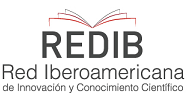Percepción sensorial de diferentes tipos de chocolates utilizando Mapeo Proyectivo
DOI:
https://doi.org/10.46363/jnph.v1i3.3Palabras clave:
Consumidor, Chocolate, Autovecto, atributo, Factor múltipleResumen
El chocolate es un dulce que viene desde tiempos muy antiguos a base de cacao, este alimento es muy consumido en la actualidad debido a diversas características que presenta este dulce. En este contexto, el presente informe tiene por objetivo saber qué similitudes y diferencias tienen los diversos tipos de chocolates que se venden en el mercado peruano, específicamente del departamento de La Libertad, Cajamarca y Lambayeque. Para tal fin, 24 consumidores, procedentes de las regiones mencionadas, fueron citados a degustar ocho diferentes tipos de chocolates, usando la técnica del mapeo proyectivo, esto fue realizado en una sola sesión. Estos consumidores escribieron coordenadas para cada muestra y estas se redujeron en un solo valor, usando el método del autovector, además de atributos que caracterizaban a cada tipo de chocolate, con lo cual salieron seleccionados los 8 más relevantes, estos atributos fueron sometidos a un análisis de factor múltiple y una tabla de frecuencias. Los resultados mostraron que los chocolates con más similitud fueron Sublime almendras y Vizzio, en cuanto a diferencias, el chocolate Sol del Cuzco fue el que más difería al resto de muestras.
Citas
Ackar, D.; Lendić, K.V.; Valek, M.; Šubarić, d.; Miličević,B.; Babić, J.; Nedić, I. (2013). Cocoa polyphenols: Canwe consider cocoa and chocolate as potential functional food? Journal of Chemistry , 1-7.
Albert, A., Varela, P., Salvador, A., Hough, G., & Fiszman, S. (2011). Overcoming the issues in the sensory description of hot served food with a complex texture. Application of QDA, flash profiling and projective mapping using panels with different degrees of training. Food Quality and Preference, 22, 463–473.
Belščak-Cvitanović, A.; Komes, D.; Durgo, K.; Vojvodić, A.; Bušić, A. (2015). Nettle (Urtica dioica L.) extracts as functional ingredients for production of chocolates with improved bioactive composition and sensory properties. Journal Food Scientists & Technologists 52(12): 1-12.
Brcanović, J.M.; Pavlović, A.N.; Mitić, S.; Stojanović, G.S.;Manojlović, D.D.; Kaličanin, B.M.; Veljkvić, J.N. (2013). Cyclic voltammetric determination of antioxidante capacity of cocoa powder, dark chocolate and milk chocolate samples: Correlation with spectrophotometric assays and individual phenolic compounds. Food Tech. and Biotech 51(4): 460-470.
Berget, I., Varela, P., & Tormod, N. (2019). Segmentation in projective mapping. Science Direct. 71, 8-20.
Godočiková, L.; Ivanišová, E.; Kačániová, M. (2017). The influence of fortification of dark chocolate with seabuckthorn and mulberry on the content of biologically active substances. Advanced Research in Life Sciences 1(1): 26-31.
Godočiková, L.; Ivanišová, E.; Árvay, J.; Petrová, J.; Kačániová, M. (2016). The Comparison of biological
activity of chocolates made by different technological procedures. Potravinarstvo Scientific Journal for Food Industry 10(1): 316-322.
Dehlholm, C., Brockhoff, P., Meinert, L., Aaslyng, M., & Bredi, W. (2012). Sort and beer: Everything you wanted to know about the sorting task but did not dare to ask. Food Quality and Preference, 26 (2), 267–277.
Esmerino, E., Tavares, E., Carr, T., Ferraz, J., Silva, H., Pinto, L., Freitas, M., Cruz, A., Bolinni, H., (2017). Consumer-based product characterization using Pivot Profile, Projective Mapping and Check-all-that-apply (CATA): A comparative case with Greek yogurt samples. Food Research International. 99 (1) 375-384.
Hopfer, H., Brown, A., & Bakke, A. (2020). Understanding American premium chocolate consumer perception of craft chocolate and desirable product attributes using focus groups and projective mapping. Plos one, 15 (11).
Kennedy, J. & Heymannh, H., (2009). Projective mapping and descriptive analysis of milk and dark chocolates. Journal of Sensory Studies, 24 (2), 220-233.
Moussaoui, K.A., & Varela, P. (2010). Exploring consumer product profiling techniques and their linkage to a quantitative descriptive analysis. Food Quality and Preference, 21, 1088–1099.
Moelich, E. I., Muller, M., Joubert, E., Naes, T., Kidd, M. (2017). Validation of projective mapping as potential sensory screening tool for application by the honeybush herbal tea industry. Science Direct 99 (1), 375-286.
Moussaoui, K. A., & Varela, P. (2010). Exploring consumer product profiling techniques and their linkage to a quantitative descriptive analysis. Food Quality and Preference, 21, 1088–1099.
Nestrud, M. A., & Lawless, H. T. (2010). Perceptual mapping of apples and cheeses using projective mapping and sorting. Journal of Sensory Studies, 25, 390–405.
Risvik, E., McEvan, J.A., Colwill, J.S., Rogers, R., & Lyon, D.H. (1994). Projective mapping: A tool for sensory analysis and consumer research. Food Quality and Preference, 5, 263–269.
Varela, P., Antúnez, L., Berget, I., Oliveira, D., Christensen, K., Vidal, L., Naes, T., Ares, G. (2017). Influence of consumers cognitive style on results from projective mapping. Food Research International. Science Direct, 99 (1), 693-701.
Vidal, L., Antúnez, L., Giménez, A., Varela, P., Deliza, R., Ares, G. (2016). Can consumer segmentation in projective mapping contribute to a better understanding of consumer perception? Food Quality and Preference, 47, 64-72.







